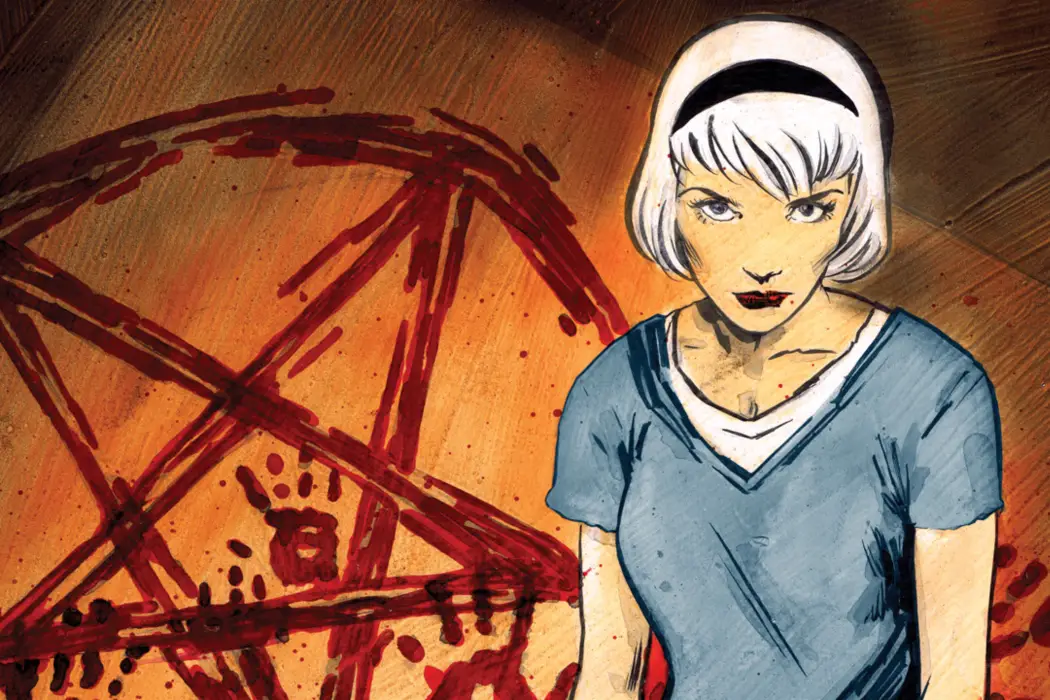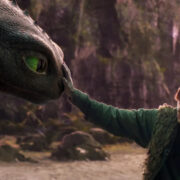Think The Good Guys Always Win? Think Again: Satan Is Making A Comeback

Aaron is currently a Social and Political Sciences student at…
The name Satan has been a taboo and a figure of evil within our world of religion for centuries; a horned creature born from sin whose presence equals transgression and a fall from grace for all. But who would have thought that by the end of 2018, the embodiment of Satan would be seen as a pop culture icon?
The character has become a recurring role in a variety of films and TV shows in the past year, acting not only as a manifestation of our darker tastes but also as a projection of the fears of society in a modern day. With such an influx of the Prince of Hell not occurring since the growth of the horror genre in the 60’s and 70’s, does this mean anything for our favourite forms of entertainment and should we get accustomed to his existence?
Fallen Angel or Rising Star?
Within the past few months, the Devil has become a prominent antagonist on our screens, featuring heavily in both the new Netflix adaptation Chilling Adventures of Sabrina and in American Horror Story: Apocalypse . Throughout CAOS, the Dark Lord is depicted as the typical horned and hoofed beast that is ingrained into our mind as the epitome of evil and sin. However, within Apocalypse and another Netflix show, Lucifer, the Devil is portrayed as manifesting himself in a human body or within the Antichrist. It is clear that Satan is used for a variety of reasons within such shows, with CAOS using Satan as he would usually be used; a dangerous and tempting evil that is determined to cast sorrow upon the world. However in Apocalypse, the Antichrist, Michael Langdon, is portrayed as a villainous force that is showered in sympathy by the audience as he is secretly rooted for in his attempts to destroy the world. This change in traditional depiction of Satan is supported by the characterisation of Lucifer Morningstar in Lucifer, who dates women and helps the LAPD solve crimes; strange isn’t it?

The personality and like-ability that the Prince of Hell has in such TV shows is not only surprising but deeply interesting for a viewer. Half the fun of watching these shows is doused in the questioning of our minds as to whether we should be able to enjoy the enticing nature of the characters or whether we should hate the embodiment of evil and all his misdeeds. It is obvious that TV is a place where Satan as a character can thrive, with the continuous availability to produce a characterised figure with emotion, motivation and personality that can appeal to all audiences.
But Wait? Haven’t We Seen You Before?
This is not the first time that the Devil has taken centre stage in entertainment however. Throughout the 60’s and 70’s, the horror genre rinsed Satan’s image for all it could, to strike up fear and indulgence in the cinema form. With the domination of movies such as Rosemary’s Baby (1968), The Exorcist (1973) and The Omen (1976), Satan had a starring role for a short while until he went back into hiding. The depiction within the horror genre tends to remain true to the typical image of the figure, with many of these films presenting him as an omnipresent force, that possesses, influences sin and sends his demon children to do his evil for him; all to the enjoyment of the audience.

As stereotypical as it is, within such a genre, it was very frequent that Satan would prey upon the woman. Showcased as being the vulnerable, screaming and horrified individual that became the genre standard; women did not fare well against evil. When comparing this alongside societal views in the 60’s and 70’s, it is clear to see that this very well could be a reflection of the fears of not only the entertainment industry but traditional society as a whole. Acting as a combatant against the growing feminist movement, the manifestation of Satan preying on women was a way of telling the movement that there will always be higher forces that can overpower and control them. Masked by the fact that this was the epitome of what Satan embodies, the industry attempted to protect their favoured world of using the woman as a symbol of fragility and exploitation.
Not much has changed in current film, with the release of The Nun and Hereditary this year, both featuring women that befell to the consequences of evil. Whether the antagonist is vanquished or not within the movies, it is a common theme that the portrayal of Satan is not in any way changed or revolutionary, and still remains an omnipresent force in the genre. Whether this reflects the same fears of the industry as in the 70’s or is simply just the formula for a more enjoyable theatrical experience, is down to you.
Feminism VS Satan: Triggering or Essential?
On the other hand, TV has created a revolutionary change in the depiction of Satan as a lust worthy, attractive and like-able man that provides a very strong social message that is not recognisable upon first watch. The sympathetic yet powerful man that can be seen, is the culmination of many of our fears in a misogynistic and patriarchal world. That is the true horror. A forceful man that still has the ability to entice and allure is all too recognisable in today’s society; and is being very interestingly but essentially integrated into the TV horror genre.

The important element of this change however is not in the change in illustration, but the change in opposition to such a force. Whether it is the rebellion of the witches lead by Cordelia Goode (who herself is a pop culture icon) in Apocalypse, to the attempts of Sabrina in CAOS to bring down Satan and his rule over the witch community; TV has allowed the female to become the all powerful figure and break away from the chains of sexism and objectification. Mirroring the advancements of society is where TV allows itself to become superior as a form of entertainment, as the episodes continue, there is the ability to adapt to the world in a way that an individual film cannot do. The women in such programmes are not only the defeaters of evil, but the accomplices; not because they have to, but because they have their own free will to choose their role in complicated society which they have in the past not had the ability to do.
So… Does This Mean We Can Like Satan Or Not?
It is upon the realisation of the role of Satan in modern TV that the dilemma of his like-ability is reached. It feels so wrong to want to follow and support the character with the awareness of the role he is playing in the reflection of our own society’s fears. But sometimes the character and even the actor in the role provide such an entertaining performance that it is impossible to resist or hate them.
I think it is most important to always retain the awareness of the reasoning as to why the Devil is characterised the way he is. However, this should not limit the way you feel towards the character, and if you choose to like the character then that is your own prerogative. It is the focus upon the heroine and emphasis upon empowerment that must be particularly admired by all, and acknowledged as an advancement in entertainment and the way they characterise their female roles.
With the release of further series of AHS and CAOS in 2019, and further horror film such as Annabelle 3, Hellboy and The Curse of La Llorona, it is clear that Satan and his following is here to stay. Buckle up and get used to his immoral and corrupt ways; but pay strong attention to they way he is portrayed, and the changes that are pushed onto the mythology of the illustration of the beast. Do you want Satan to continue being his horror infused hoofed, beastly self, or do you prefer the human, emotive portrayal that serves as a social and political message on a wider spectrum?
What do you think about the increasing depiction of Satan in both film and television? Let us know in the comments below!
Does content like this matter to you?
Become a Member and support film journalism. Unlock access to all of Film Inquiry`s great articles. Join a community of like-minded readers who are passionate about cinema - get access to our private members Network, give back to independent filmmakers, and more.
Aaron is currently a Social and Political Sciences student at the University of York and is working towards doing a Masters degree in Journalism. He has a passion for Film and Television, and enjoys nothing more than cosying up to binge-watch a TV series all in one night instead of sleeping.












